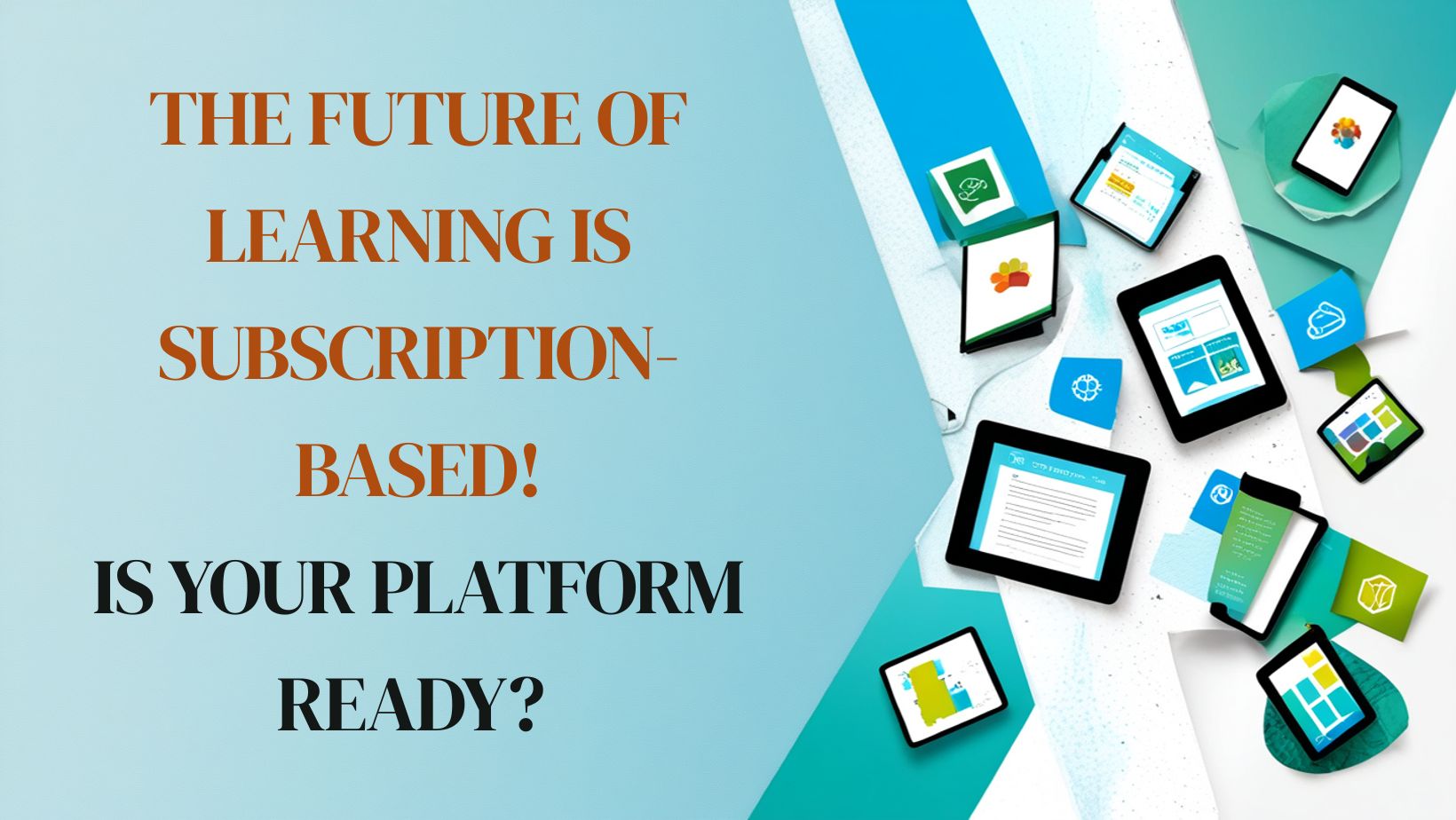
Are learners abandoning your platform because it feels outdated, rigid, or overpriced?
The education landscape is evolving at a breathtaking pace. One of the most disruptive trends today is the rise of subscription-based learning platforms. Just as Netflix redefined entertainment, learners now expect the same on-demand, personalized, and affordable experience from education providers.
In fact, the global e-learning market is expected to reach $1 trillion by 2032, with subscription models leading the charge.
But here’s the challenge: Traditional learning platforms aren’t built for this shift. Locked-in course structures, static content, and high upfront costs are pushing learners toward more flexible alternatives.
To compete and thrive, it’s time to move from one-time transactions to continuous value delivery—through flexible, learner-first subscription models.
So ask yourself:
Is your platform built for the future of learning—or stuck in the past?
To stay ahead in this rapidly evolving landscape, education providers must rethink not just what they offer—but how they offer it.
Let’s explore what makes the subscription model so powerful, how it addresses learner needs, and what it takes to build a platform that doesn’t just keep up—but leads.
The Subscription Model: A Game-Changer in Education
Subscription-based learning isn’t a passing fad—it’s becoming the standard for modern education. Think Netflix for knowledge. Learners want instant access to a rich library of courses and resources, tailored to their goals and pace.
This model offers:
And perhaps most importantly, it democratizes education—opening doors for learners across geographies and income levels.
Yet, challenges remain. Subscription fatigue and content overload are real. Platforms must find the balance between quantity and quality, keeping learners engaged without overwhelming them.
Is Your Learning Platform Ready? Here’s What You Need to Focus On:
.png)
1. User Experience Is Everything
Your interface must be frictionless and intuitive. Navigation, content discovery, and support should feel effortless. Platforms like Skillshare excel here—they make it simple for users to find the right class and connect with creators.
2. Diverse & Dynamic Content
A successful subscription model thrives on content variety. Are you offering:
Look at MasterClass—they attract a global audience with everything from screenwriting to tennis, taught by icons.
3. Community-Driven Learning
Today’s learners crave connection. Enable forums, live Q&As, peer feedback, or cohort-based classes. A strong learning community reduces churn and boosts engagement.
Platforms like Coursera and Domestika have embraced this to create more than just courses—they’ve built ecosystems.
4. Flexible Pricing, Better Retention
Not all learners are the same. Offering options—monthly, annual, team licenses, or even freemium models—can meet varied financial needs and widen your reach.
Think beyond one-size-fits-all pricing. Your flexibility = their loyalty.
5. Let Data Drive Your Decisions
Use built-in analytics to understand learner behaviour:
These insights allow you to refine your platform and content continuously—leading to higher retention and ROI.
This Is a Global Movement
From California to Canberra, and Berlin to Buenos Aires, learners are embracing subscription-based platforms. Edtech startups across Asia, Africa, and Latin America are rapidly adopting this model to reach untapped audiences.
If your platform doesn’t evolve, it risks falling behind in this global shift.
Let’s Build the Future of Learning—Together
The future of learning is subscription-based, learner-centric, and community-driven. Whether you're running a niche course platform or a large institution, your ability to adapt now will define your relevance tomorrow.
Ready to future-proof your platform? Let’s explore how to transform your learning experience today.
👉 Start simplifying your subscriptions with MYFUNDBOX — the all-in-one billing solution for modern learning platforms.
.png)
.png)















